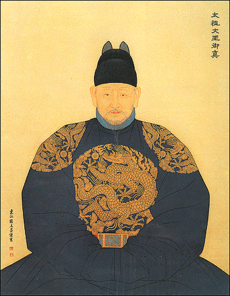
Page Title
History Projec 12
-Lailai, Jacob

Korea is located on a peninsula and is a mountainous land. Because of the mountains and the seas, Korea developed somewhat in isolation from its neighbors. Thus, on the one hand, Korean people developed their own native traditions. But on the other hand, the Koreans adapted different cultures to fit their needs.
In the early Korea, different clans or tribes controlled different part of the land. However, when Han dynasty conquered it and established a government there, Koreans learned about such ideas as centralized government. The Korean tribes began to gather together into federations. Finally, these federation became three rival kingdoms. One of them is Silla. It defeated the other kingdoms, drove out the Chinese, and gained control of the whole Korean peninsula.
Under Silla rule, Koreans built buddhist monasteries and stone sculptures. They also developed a writing system.
A rebel officer named Wang Kon gained control of the country. He named his dynasty Koryu Dynasty. It modeled Chinese central government. It also established a civil service system as China. But the system was not as useful as in China, since the Koryu society was divided into landed aristocracy and rest of the population. Same as the examination system, the sons of nobles could get the best position and these position became hereditary. The exam was either cannot help the government choose the best person or irrigated the rest of the citizens.
Mongol conquered them in 1231. They demanded huge tributes and the children and artisans were taken away as slaves. The Koryu Dynasty weakened. Thus, after Mongol fell, a group of scholar-official and military leader overthrew the weak Koryu Dynasty.
The new dynasty was called the Choson, which would rule for 518 years.
Koryu Dynasty
Silla
Choson
Korean potters produced the celadon pottery, famous for its milky green glaze. The artisans carved thousands of large wooden blocks for printing all the Buddhist scriptures. This was destroyed by the Mongols, but the disaster sparked a national effort to recreate them. There were more than 80,000 blocks in Korea today.




